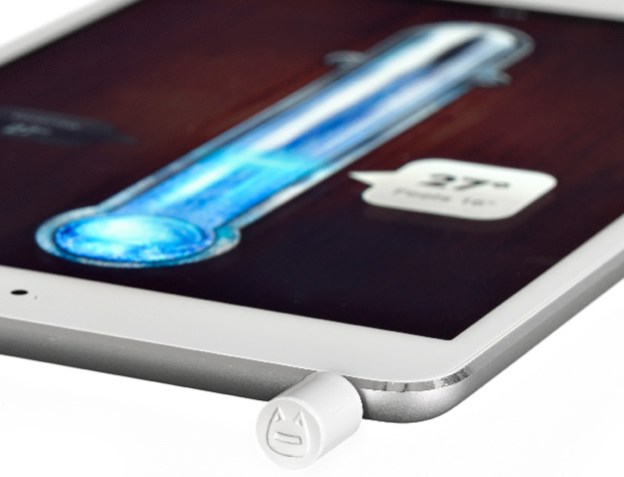
Blasting through a Kickstarter funding goal of $35,000 in the first seven hours after the project went live, the Thermodo by Robocat is a miniature electrical thermometer that plugs into the headphone jack on a smartphone or tablet. Also designed to plug into a key ring for storage, the passive temperature sensor can measure the external or interior temperature of the surrounding environment. According to the details on the Kickstarter page, an audio signal is first sent through the sensor. At this point, the sensor attenuates the signal amplitude and a built-in microphone picks up the attenuation in order to calculate the temperature using software installed on the mobile device.

The Robocat team states “It’s incredible how much we rely on forecasts and so called “local” temperatures – the truth is that temperature values available online or through apps comes from weather stations that can easily be miles away. Nothing beats taking the measurement yourself right where you are.”
Assuming the software is already installed, the user does not require a network connection in order to track the temperature. At launch, the Thermodo will work with two weather applications developed by the same Danish software studio. Specifically, Android or iOS users can download Thermo for free and iOS users can also download a gorgeous premium weather application called Haze. However, the development team is currently working on a free Thermodo companion app for Apple users.
The team is also packaging an open source software development kit that will allow other developers to create native Thermodo applications for other platforms in addition to adding Thermodo support to existing applications.

In addition, the Robocat team plans to create a native Android companion application for the Thermodo assuming the Kickstarter project reaches a minimum of $125,000. However, this likely won’t be an issue as the project has already broken $109,000 with 31 days to go before the end of the funding round.
In fact, the significant interest in the product could mean that Kickstarter backers will unlock further bonuses outlined by Robocat. For instance, a “fiery red” version of the Thermodo will be unlocked at $250,000 and all plastic injection molds will be replaced with a more sturdy aluminum casing if the project hits half a million before the end of the funding round.
At the moment, the Robocat team is getting ready to work on prototypes for manufacturing. During May and June, the team will complete a beta version of the software development kit and companion app as well as running a test production run. By July and August, the team will be running the full production run, packing up the final product and getting the first units into the hands of Kickstarter backers. The Thermodo starts at $25 for a black or white version, however there’s also an anodized aluminum version available for $39. As with any Kickstarter project, delivery of the Thermodo could be delayed due to manufacturing issues over the next few months.


